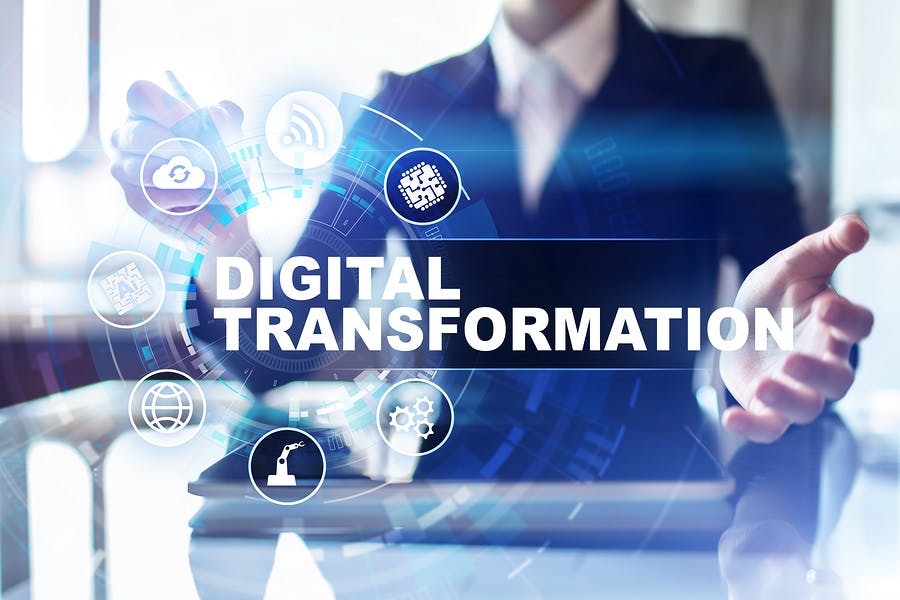The importance of digital transformation and redefining the way employees work is finally reaching the priority list of senior leaders across the globe — but most organizations haven’t truly put effort behind the initiative, and many haven’t even developed a plan. Instead, their plates are full with making sense of the productivity and collaboration tools, apps and software that have infiltrated their business. All of these solutions promise to do several things well, but as a group, yield patchy results and incomplete solutions.
To help get on the right path to digital transformation nirvana, organizations must consider three distinct personas in the workplace. Each persona has its own unique technological needs, the fulfillment of which is critical to the success of all in the digital workplace:
- “Me” — the individual employee — Employees need tools and applications that support their daily tasks. For them, the digital workplace must focus on personalization and ease of use. Their needs may be served by content creation suites, such as Microsoft Office, as well as file sharing apps and task managers. The key for this persona is how they leverage the digital workplace to stay up to date on tasks and individual priorities.
- “We” — teams within the corporation — For teams, a digital workplace means collaboration, knowledge management and group productivity. Teams require a portfolio of solutions that integrate with the tools they are already using and solve for specific team and departmental challenges.
- “Us” — the corporation as a whole — The technological needs of the organization are what’s driving the revamping of intranets and a focus on cross-functional collaboration. This persona maintains a focus on the culture and brand, encouraging a collective rallying around the mission, vision and values of the organization.
Current technological trends have placed the needs of the “me” and “us” personas behind those of the “we.” Team-focused apps like Slack, Microsoft Teams and Trello have risen in popularity, but they fail to address the long-term needs of knowledge management and sharing. Group collaboration and chat apps aren’t a digital destination and only meet the needs of one persona. In order to execute an effective and long-lasting digital transformation, organizations must create a single destination that meets the needs of all three workplace personas and that integrates with the tools and apps employees love to use.
Sharing knowledge across the whole
Popular collaboration apps designed to improve the effectiveness of teams often focus on instantaneous results and benefits: There is a project to complete and questions to ask, so how do we track the associated tasks and get them done as quickly as possible? But this mindset forgets the downstream maintenance that is critically necessary in these projects. Without addressing these concerns, an organization will find itself at a dead end, with outputs that it cannot easily share and communicate across the company.
Organizations must look for solutions that maintain and manage the knowledge generated by heightened cross-team collaboration. Most productivity and collaboration apps on the market today struggle to integrate with the rest of the digital workplace, leaving knowledge gaps and creating data silos. These apps rarely contain solutions for permanent, big-picture knowledge management and company-wide communication — the kind of solutions that can house long-term KPIs and objectives. Organizations need to look to next-generation intranets in order to achieve this kind of consolidation and to create an engaging digital destination.
Successful digital transformation initiatives also need to gain insight from HR, beyond just the CMO and IT team.
HR’s role in digital transformation
While CMOs are often the first leaders to address digital transformation outside of IT, HR needs to begin thinking about digital transformation maturity and support of the “we.” Faced with a disjointed suite of productivity tools that fail to support outputs, HR leaders must evaluate current efforts, asking the question: How do we want to interact internally, and what type of communication and collaboration culture do we want to foster?
To make sense of a digital transformation mess, HR leaders must push for a comprehensive digital workplace. Organizations need a digital hub for the entire organization to communicate, collaborate and share knowledge across departmental and geographical lines. A centralized destination where employees go to start their day and return to throughout the day to get their work done, and to connect and engage with each other.
This is especially important with the rise of remote work. People who work remotely often feel like they are missing out — and disjointed communication tools could be a major contributor. In fact, 39% of remote workers are unable to access important documents or information, and 33% have missed information about process or policy changes. The success or failure of a digital workplace all comes down to how information is shared and how collaboration happens. HR must begin to think about the type of culture that the company has built and how teams are enabled to produce their best work — even those teams that work outside the office.
A digital workplace that supports the entire organization as well as the company culture, vision and brand will also drive employee engagement, impacting factors like employee engagement and retention down the line. Feeling productive is one of the biggest drivers of job satisfaction — and that’s most definitely an HR issue.
